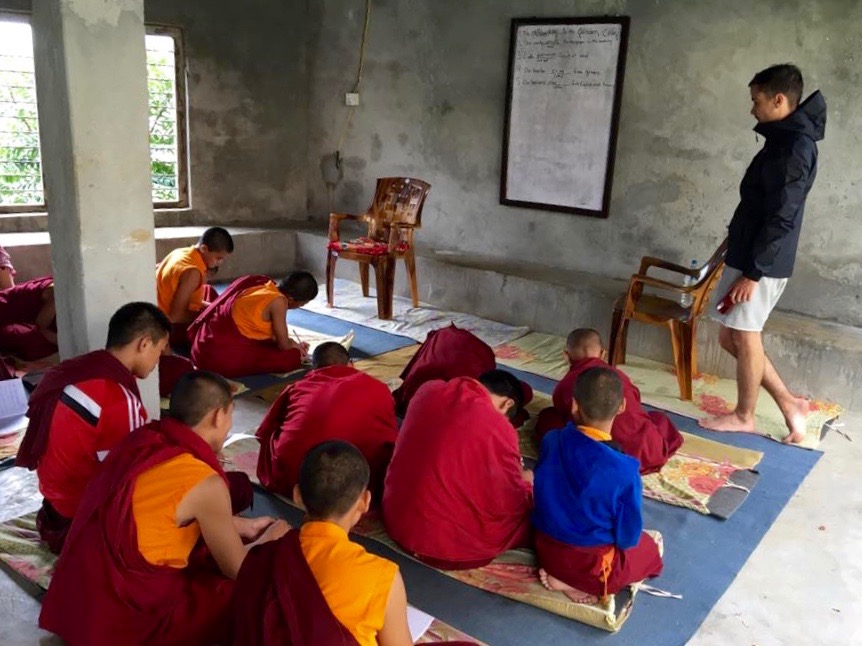Badri Rai is celebrating some good news this month.
Nepal’s Department of Immigration just announced that foreign tourist arrivals shot up 28 percent in the first half of 2017 – 460,304 tourists arrived via air in the first six months of 2017, compared to 359,672 in the first half of 2016.
This is a big relief for for the more than 400,000 Nepalis whose livelihoods depend on the country’s tourism industry. According to the World Travel and Tourism Council’s annual Economic Impact Research report for 2017, the tourism industry accounts for 7.5 percent of Nepal’s GDP and is expected to rise.

“Tourism in Nepal has always played such an important role in our national economy,” says Shanti Regmi. Regmi runs women empowerment projects for the NGO Aythos, which provides income-generating opportunities for Himalayan communities through agricultural initiatives.
Tourism had been on the decline in Nepal since 2012 but following the April 2015 earthquake it dropped drastically. The devastating earthquake left nearly 9,000 Nepalis dead, 22,000 injured and millions homeless. From September 2015 to February 2016, there was a blockade along the border between Nepal and India that caused severe fuel shortages, further hindering cleanup and rebuilding efforts.
Rai, who runs both a trekking company and Hands for Help Nepal, a local NGO that places international volunteers throughout Nepal, says that tourists themselves deserve credit for the increase in their numbers. Thanks to social media and word of mouth, more people are getting the message that Nepal is safe to visit.
Nepal’s Department of Tourism aims to have two million tourists to touch down in the country by 2020. In early June, it hosted the Himalayan Travel Mart, bringing in 250 media and travel industry representatives from all over the world. It is expected to become an annual event.
The country also been receiving accolades from trusted publications. It made National Geographic Traveller Magazine’s “Cool List” for 2016 and was named Lonely Planet’s “best value” destination for 2017.
While the rise in tourism is a sign that the country is on the rebound, both Rai and Regmi say that life still hasn’t yet returned to normal for thousands of Nepalis.

“People are still suffering,” said Rai. “The situation is still chaotic.”
Over the past 27 months, only five percent of the earthquake damaged or destroyed homes have been rebuilt. 800,000 families still remain in temporary shelters with only flimsy tarps and tin sheets for protection from this summer’s monsoons. Despite Nepali government distributing rebuilding grants, but thousands of families report to have not even received their first payment. Those who have started rebuilding have been hit with delays due to shortages of materials and skilled labor, and have had to deal with red tape — like waiting weeks or months for inspectors to sign off on initial work in order to receive additional payments.
“Everyone is waiting for the government to rebuild their homes,” says Regmi.
In a report released this spring, Amnesty International declared the Nepali government has failed marginalised communities in particular, “breaching both the Constitution and international human rights law”. Many indigenous people living in the hard-hit, remote mountainous regions have been struggling to meet bureaucratic requirements, including proof of land ownership.
The country also is holding its first election this year in 20 years, and both Rai and Regmi say it has diverted government attention and resources away from rebuilding efforts.
It’s because of the lack of government action, says Rai, that tourism is needed now more than ever to put money directly into the pockets of Nepalis. Regmi agrees, and thinks that as more tourists arrive and see the poor conditions many survivors are still living in, the government will be forced to make changes.
“Come to Nepal,” urges Rai. “Help Nepal.”
Read Ethical Traveler's Reprint Policy.
